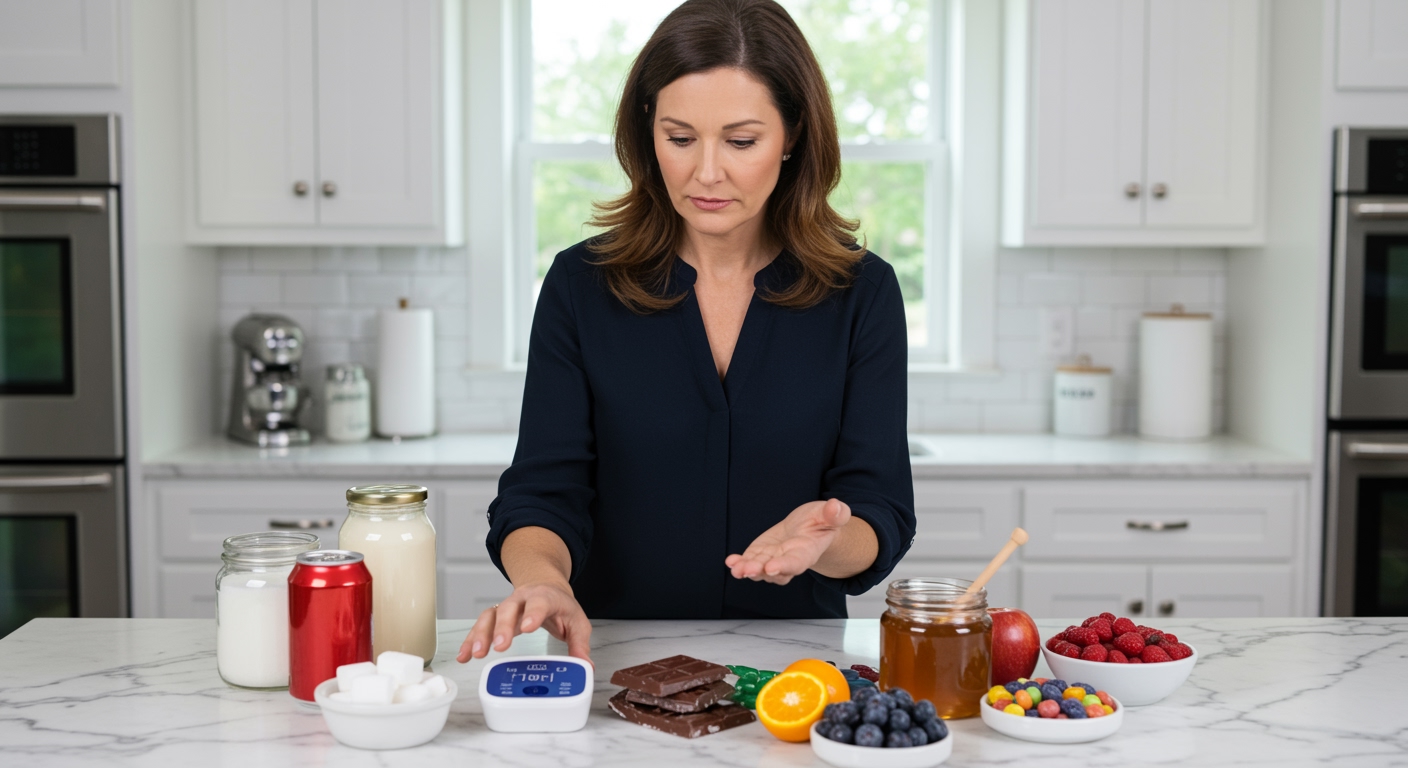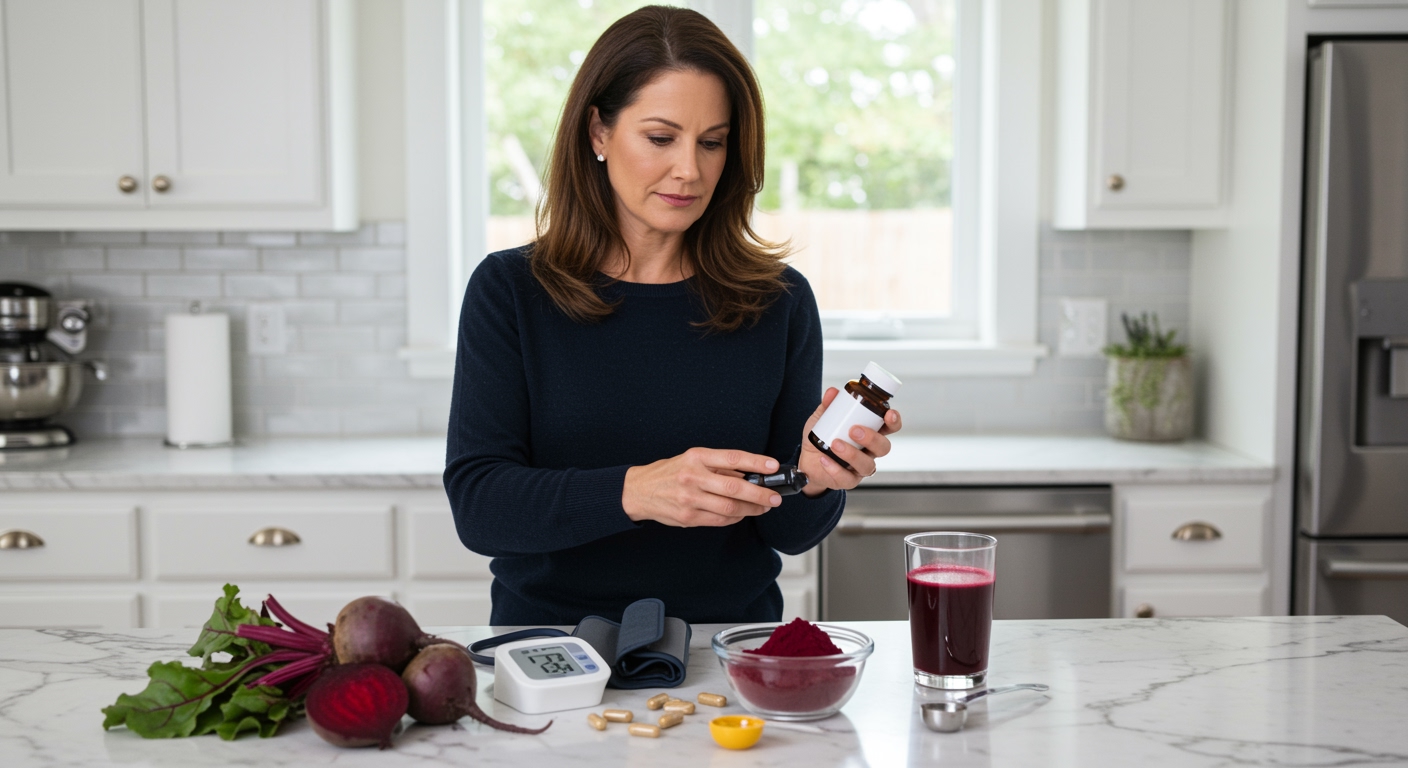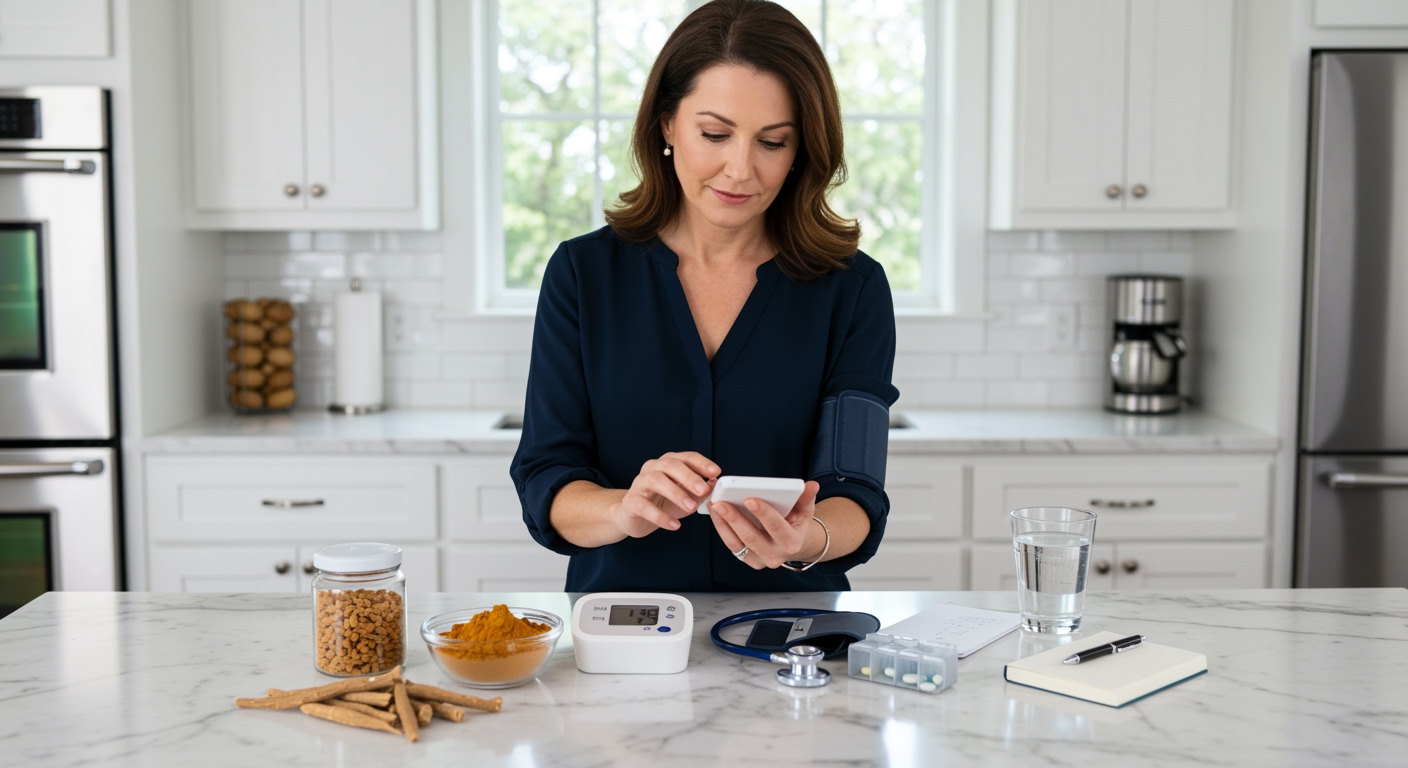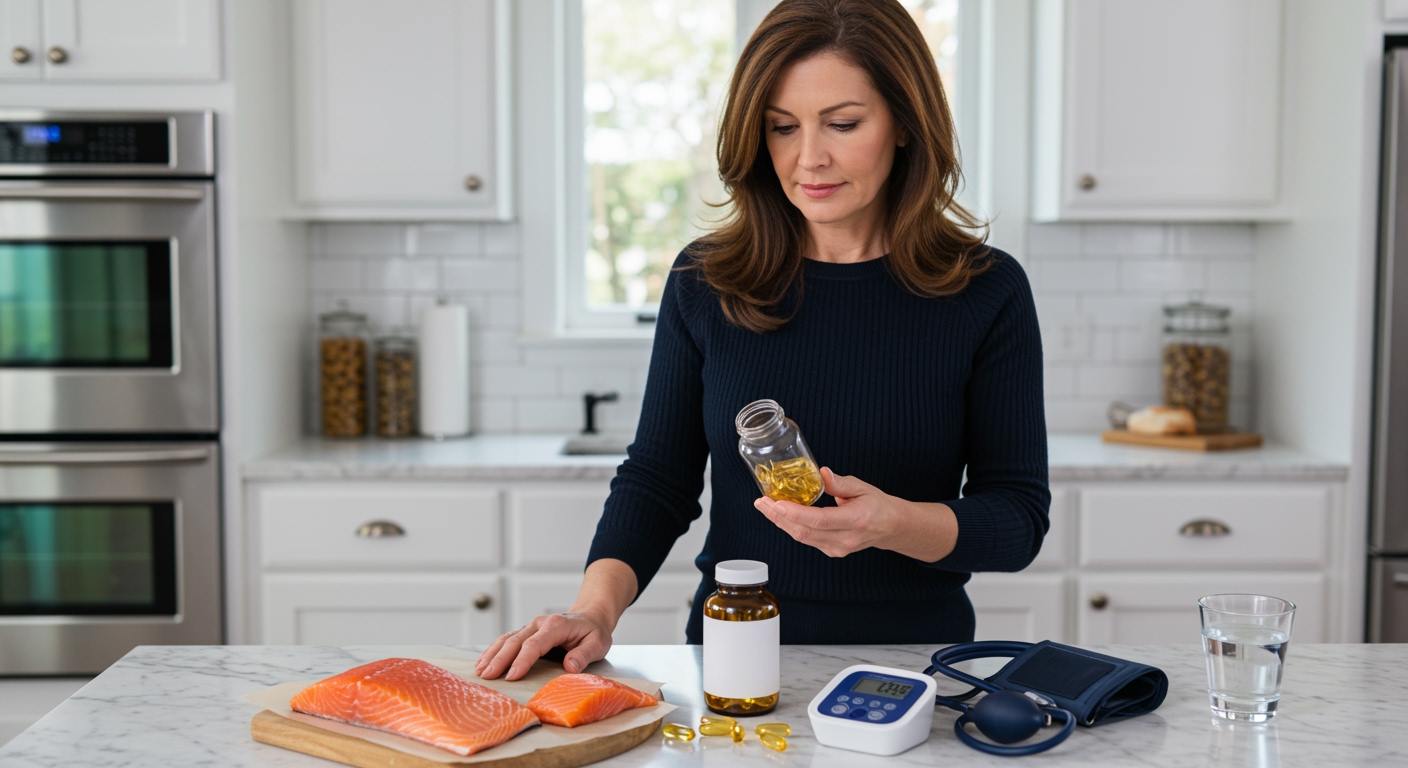✪ Key Takeaway: Yes, hypertensive patients should limit sugar intake as it raises blood pressure through multiple mechanisms.
Introduction
Your doctor just told you that your blood pressure is too high and you need to watch what you eat.
You might be wondering if that sweet tooth of yours is making your hypertension worse and whether cutting back on sugar will actually help lower your numbers.
Hi, I’m Abdur, your nutrition coach and today I’m going to explain exactly how sugar affects your blood pressure and what you need to know to make the right choices for your heart health.
How Does Sugar Actually Raise Blood Pressure?
Sugar doesn’t just make your blood pressure spike through one simple pathway.
When you eat excess sugar, your body converts it into fat through a process called lipogenesis, and this fat gets stored around your organs and blood vessels.
This visceral fat releases inflammatory compounds that damage your blood vessel walls and make them less flexible.
Sugar also triggers your kidneys to retain more sodium and water, which increases the volume of blood your heart has to pump.
High sugar intake stimulates your sympathetic nervous system, causing your heart to beat faster and your blood vessels to constrict.
Research shows that people who consume more than 25% of their daily calories from added sugars have nearly triple the risk of developing cardiovascular disease compared to those who limit sugar to less than 10% of their calories.
✪ Fact: Just one 12-ounce soda contains about 39 grams of sugar, which equals nearly 10 teaspoons.
Which Types of Sugar Are Most Dangerous for Hypertension?
Not all sugars affect your blood pressure equally.
Fructose, the sugar found in high fructose corn syrup and many processed foods, is particularly harmful because your liver processes it differently than glucose.
When fructose hits your liver, it gets converted directly into fat without any regulatory mechanisms to slow down the process.
This rapid fat production leads to insulin resistance, which forces your body to produce more insulin and creates a cascade of hormonal changes that raise blood pressure.
Added sugars in processed foods are more problematic than natural sugars found in whole fruits because they lack fiber, vitamins, and minerals that help your body process sugar more effectively.
Table sugar, honey, agave nectar, and maple syrup all contain varying amounts of fructose and glucose, but they all contribute to blood pressure elevation when consumed in excess.
Studies indicate that reducing fructose intake by just 2.3 grams per day can lower systolic blood pressure by 1.2 mmHg and diastolic pressure by 0.6 mmHg.
✪ Pro Tip: Read ingredient labels carefully as sugar hides under more than 60 different names in processed foods.
How Much Sugar Should Hypertensive Patients Actually Consume?
The answer depends on your current blood pressure levels and overall health status.
The American Heart Association recommends that men limit added sugars to no more than 36 grams per day and women to no more than 25 grams per day.
However, if you have hypertension, you should aim for even lower amounts to see meaningful improvements in your blood pressure readings.
Research suggests that hypertensive patients who reduce their added sugar intake to less than 5% of total daily calories experience significant drops in both systolic and diastolic blood pressure within just two weeks.
This means if you eat 2000 calories per day, you should limit added sugars to about 25 grams or roughly 6 teaspoons.
Natural sugars from whole fruits don’t count toward this limit because the fiber in fruit slows sugar absorption and prevents blood pressure spikes.
Clinical trials show that participants who followed these stricter sugar guidelines saw their blood pressure drop by an average of 8-10 mmHg systolic and 5-7 mmHg diastolic within 8 weeks.
✪ Note: Even artificial sweeteners may affect blood pressure in some people, so moderation is key with all sweet substances.
What Happens When You Reduce Sugar Intake?
Your body starts responding to sugar reduction within days, not months.
Within the first week, your insulin sensitivity begins to improve, which helps your kidneys release excess sodium and water more effectively.
Your blood vessels start to relax as inflammatory markers decrease, leading to improved arterial flexibility and lower resistance to blood flow.
Many people notice their energy levels stabilize because they no longer experience the dramatic blood sugar spikes and crashes that come with high sugar consumption.
Your taste buds actually adapt to prefer less sweet foods after about 2-3 weeks of reduced sugar intake.
Weight loss often occurs naturally when you cut sugar, which further helps lower blood pressure since every pound lost can reduce systolic pressure by approximately 1 mmHg.
Studies tracking hypertensive patients for 12 weeks found that those who reduced sugar intake by 40% experienced average blood pressure reductions of 12/8 mmHg compared to control groups.
✪ Fact: Your kidneys can process excess sodium more efficiently when insulin levels are stable from reduced sugar intake.
Can You Still Enjoy Sweet Foods With High Blood Pressure?
Yes, but you need to be strategic about your choices and timing.
Whole fruits are your best option because they provide natural sweetness along with fiber, potassium, and antioxidants that actually help lower blood pressure.
Berries, apples, and citrus fruits are particularly beneficial because they contain compounds called flavonoids that improve blood vessel function.
If you want to include some processed sweets, save them for after physical activity when your muscles can use the sugar for energy rather than storing it as fat.
Dark chocolate with at least 70% cocoa content can actually help lower blood pressure due to its nitric oxide boosting properties, but limit portions to about 1 ounce per day.
Consider using natural flavor enhancers like cinnamon, vanilla extract, or fresh mint to satisfy sweet cravings without adding actual sugar.
Research indicates that people who satisfy sweet cravings with fruit instead of processed desserts maintain better long-term blood pressure control and lose more weight over time.
✪ Pro Tip: Pair any sweet treat with protein or healthy fats to slow sugar absorption and minimize blood pressure spikes.
The Bottom Line
Limiting sugar intake is absolutely essential for managing hypertension effectively and protecting your cardiovascular health long-term.
Your blood pressure responds to what you eat today, not what you ate last month, so every meal is an opportunity to make choices that support your health goals.
I would love to hear about your experiences with reducing sugar and managing blood pressure, so please share your questions, challenges, or success stories in the comments below.
References
At NutritionCrown, we use quality and credible sources to ensure our content is accurate and trustworthy. Below are the sources referenced in creating this article:
- PMC: Sugar and Hypertension Research
- American Heart Association: Hypertension and Dietary Factors
- PMC: Sugar Intake and Cardiovascular Disease
- Harvard Health: The Sweet Danger of Sugar





